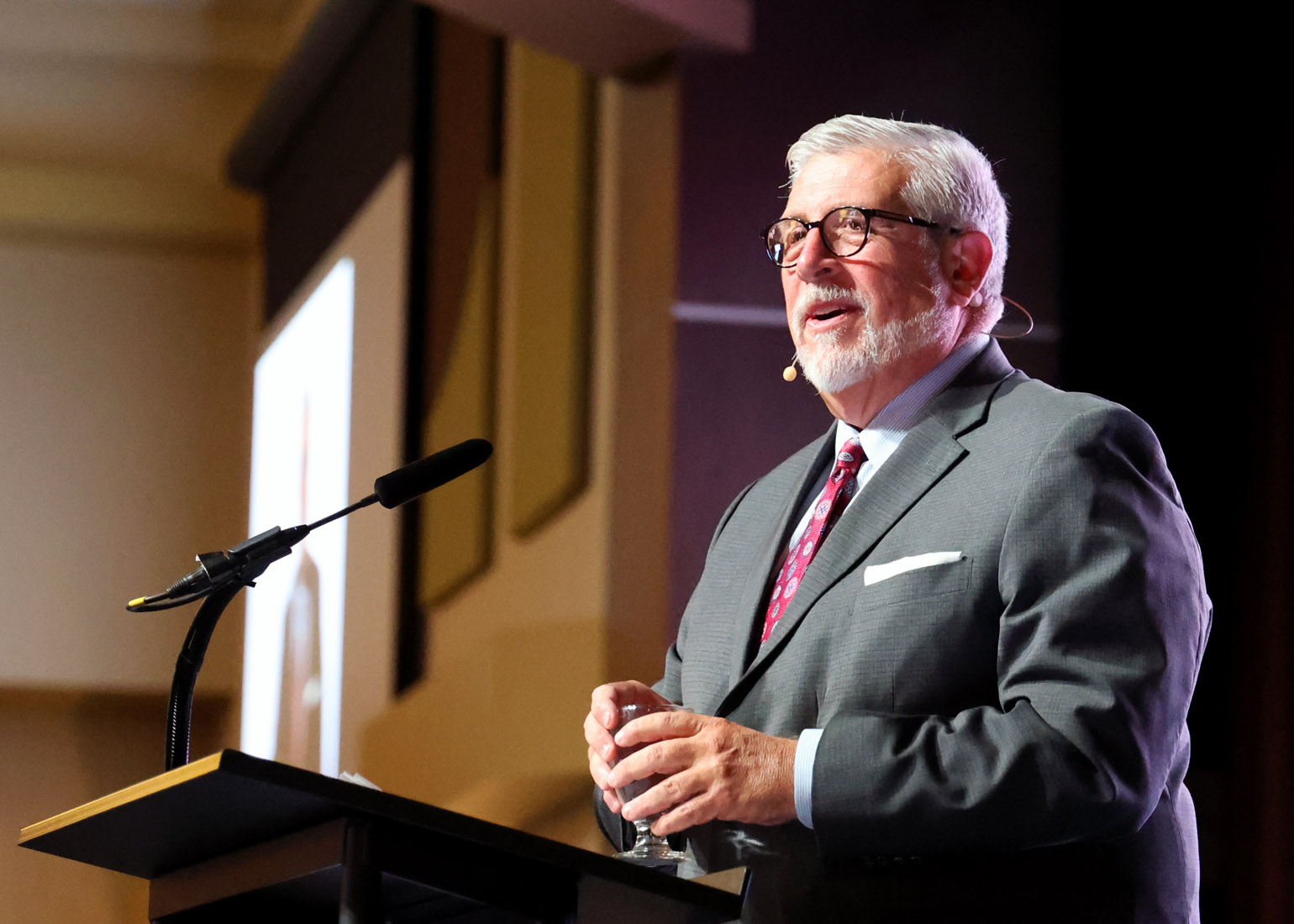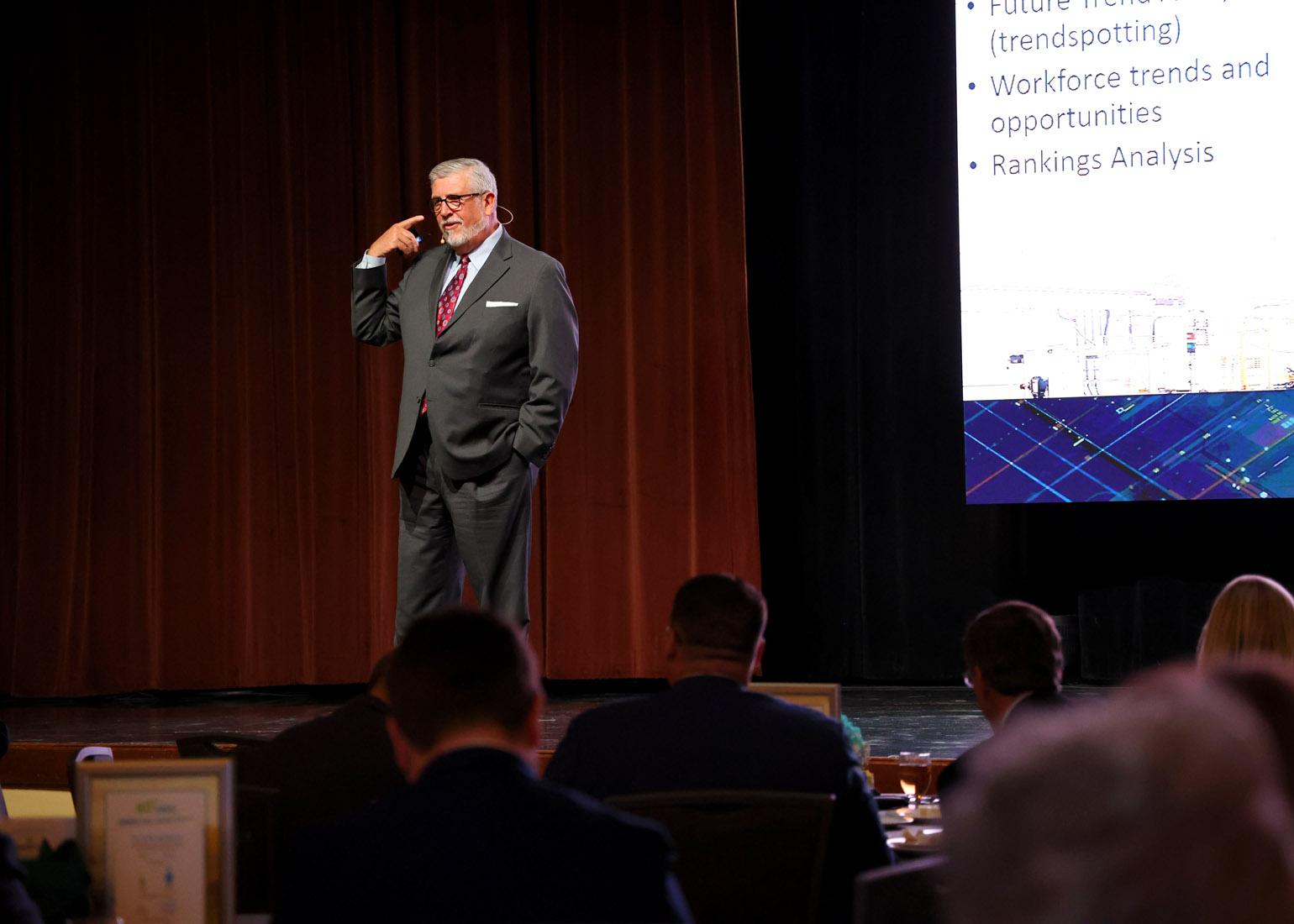While Missouri has lagged behind most of the United States in economic growth in the past decade, Springfield and Greene County outpace the rest of the state and provide a bright spot for the future.
That's according to Ted Abernathy, an economist from North Carolina-based Economic Leadership who gave the keynote address at the Springfield Business Development Corporation's (SBDC) 40th annual meeting. About 480 people showed up for the event at the Oasis Hotel and Convention Center March 6.
“When you look at jobs around the country over the last decade, Missouri hasn't done as well as the nation,” Abernathy said in his address. “When you look at the Springfield [metropolitan area] compared to the state, you’re clearly one of the leading economic success stories in Missouri.”
Abernathy is the author of a recent Hatch Foundation-funded study that called for the creation of a nonprofit aimed at developing ideas for enhanced regional collaboration. Abernathy's keynote address focused on the economic viability of the region.
Manufacturing is saving Missouri and Springfield

If there's one bright spot in Missouri's economy, it's manufacturing. Since the start of the COVID-19 pandemic, manufacturing jobs in Missouri have grown 5.5% compared with the national average of 1.6%. It's even brighter for the Springfield metropolitan area (MSA). In the Queen City, manufacturing jobs soared up 16.8% since February 2020, according to Abernathy's presentation.
While overall non-farm employment in Missouri only gained 2.8% from February 2020 to December 2023, Springfield posted a 6.3% gain in jobs. The only city in Missouri that outpaced Springfield was Joplin with a 7.2% gain. St. Joseph posted a loss of 3%.
“Manufacturing jobs over the last 10 years has favored the middle of the country,” Abernathy said. “Missouri has ridden high on economic success based on that.”
It's a subsector of manufacturing that's really saving Missouri: Tech manufacturing. Technology makes up more than 5% of occupations in Greene County, Abernathy's presentation showed.
The biggest chunk of that growth has come from tech manufacturing employment gains, Abernathy said. Missouri is far out-pacing the rest of the country in tech manufacturing and that trend is expected to continue through the next decade.
“Missouri is doing pretty well in tech, but different than a lot of the places that we think about,” Abernathy said. “It’s actually tech manufacturing jobs that are driving Missouri’s growth.”
Other bright spots

While the nation has outpaced Missouri's growth post-pandemic, there are still bright spots worth highlighting. From February 2020 to December 2023, construction jobs in Missouri have grown 6.2% compared with the national average of 5.6%. For the Springfield MSA, construction jobs have soared 11.8%.
Another bright spot for Missouri: From February 2020 to December 2023, financial activities jobs have soared 7.8% compared to the national average of 3.2%. In Springfield, financial activities jobs have gained 10.3%.
Springfield MSA is outpacing Missouri in most industries post-pandemic, showing it's a spot of economic growth in a state that has posted average or below-average gains in employment. Springfield trade, transport and utilities jobs soared 15.8% compared to a 4.6% gain in Missouri. Education and health services jobs gained 9.8% in Springfield, while Missouri only posted a gain of 2.2%.
There are still industries that Springfield is lagging behind Missouri. In Springfield, professional and technical services jobs posted a loss of 6.5% from February 2020 to December 2023. The Show Me State posted a gain of 0.2%. Leisure and hospitality jobs in Springfield fell 1.8% in the same period, while Missouri posted gains of 1.6%.
“There’s still some white collar weaknesses in the economy that you want to pay attention to,” Abernathy said.
More people are moving to Missouri than leaving

Migration patterns for the Show-Me State are changing.
“For the first time in a while, Missouri is a net in-migrator,” Abernathy said. “More people are moving to Missouri than leaving Missouri and that’s a huge positive.”
Looking ahead through 2032, working-age people, those aged 25-64, are moving into Missouri at a growth rate of less than 5%. That's better than states like California and Illinois, which are expected to post a population loss in the same time period.
Missouri still lags behind much of the country. More than 20 states, including Washington, Montana, New Mexico, Oklahoma, Florida and Maine, are expected to post population gains of over 5%.
As far as migration patterns are concerned, Greene County is showing strong growth compared with the rest of the state. The working age population in Greene County is expected to grow above 5%, according to the presentation. Most of the state, especially counties in the southeast and northwest, are expected to lose population through 2032.
“Your area has the potential to continue to grow,” Abernathy said.
What comes next?
The Springfield region is economically successful, but faces challenges that are climbing in complexity, Abernathy said. To continue to be successful, southwest Missouri requires greater collaboration.
Workforce development and the branding of the region are the two areas that the region needs to focus on the most, Abernathy said.
“Those are the two that popped up as most important to the region to wrestle with,” Abernathy said, speaking of the period when he developed the report on regionalism. “To my understanding, you've been wrestling with them for a long time. You just haven't got to the finish line.”
Connections bring about collaboration, which brings about social capital, Abernathy said. To continue to be successful, the Springfield metro needs to continue to develop place stewards.
“Some of you in this room are stewards of this place here,” Abernathy said. “You dug in, you got roots here. You believe that your goal in life is to make this place better. Not just your company, not just your neighborhood, not just your family, but this place.”
“Places that succeed have place stewards.”




